While it was noisy sleeping under the overpass and having traffic whizz pass us overnight, we at least had 24/7 security roaming around while we were there. But the temperatures were rapidly rising in the morning, so we were eager to get on our way!
We weren't far from the Beale Street Entertainment District, a historic strip packed with music venues, clubs, bars & shops known for their blues-music history. We had considered checking it out the previous night, but we weren't planning on going out to dine in, drink, or listen to any live music so we stayed in. We drove through it the next day, where the streets were definitely lined with the remnants of last night's parties, with disposable cups, bottles, and other rubbish littered along the curb. Last night's photos would have also looked better with the neon signs all lit up!

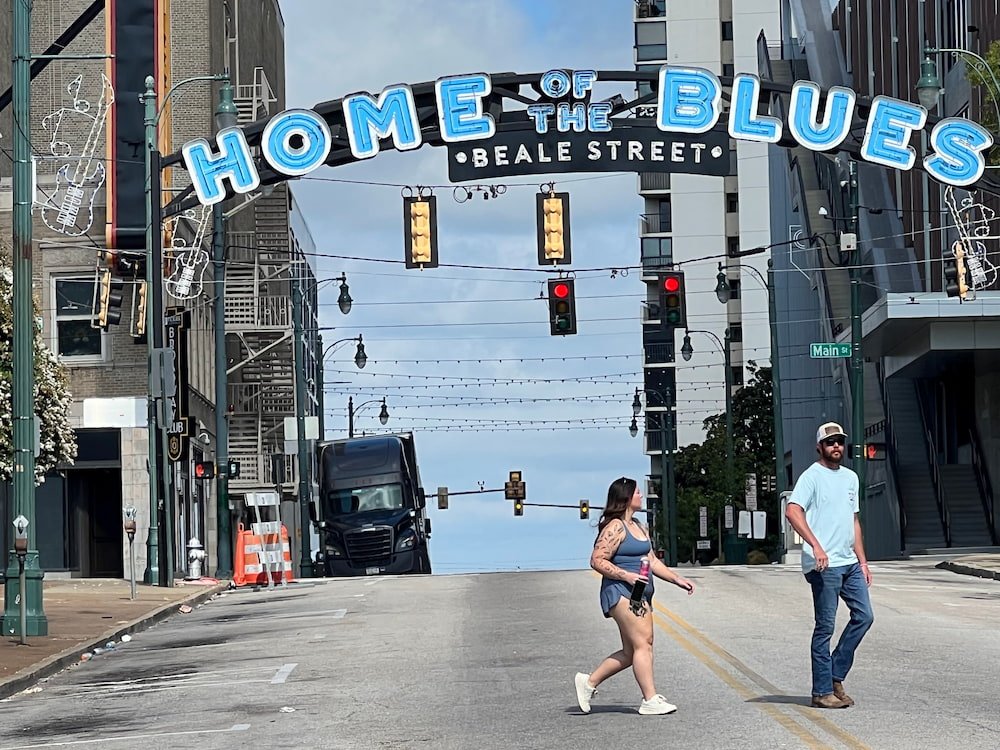
The National Civil Rights Museum
There were several museums that we'd been thinking of visiting, but we decided to focus on one so that we wouldn't get museum fatigue, and also so we wouldn't blow our budget. The Stax Museum of American Soul Music is the world’s only museum dedicated to preserving and promoting the legacy of Stax Records and American soul music. Meanwhile, Sun Studio is is known as "The Birthplace of Rock 'n' Roll"--where Elvis Presley first recorded, as well as musicians such as Johnny Cash, Jerry Lee Lewis and many other musical legends.

In the end, we decided to visit the National Civil Rights Museum (tickets $20 per adult. Parking is free, but we had to park on the street given the length of our RV). We didn't know much about it before going there, but quickly learned that it was built adjacent to the historic Lorraine Motel, which was used by Black travelers during the segregation era, with guests including Ray Charles, Aretha Franklin, and Otis Redding. Today, many people know it as the site where Dr. Martin Luther King Jr. was assassinated on April 4, 1968, as he stood outside the balcony of the room he was staying in. The hotel is no longer operational, but it was purchased to be part of the Civil Rights Museum, and opened in 1991.


The museum experience begins even before entering the building, looking up at the balcony where Dr. King was murdered, and with electronic booths to watch videos about the civil rights movement outside. Inside, the museum takes visitors through 5 centuries of history and over 25 different exhibits, spanning the Atlantic slave trade to modern-day civil and human rights movements.

There are so many artifacts, films, and displays that we could have spent all day there, and still would have needed to come back to truly have the details sink in. For example, on the cusp of the U.S. Civil War in 1860, the country had nearly 4 million slaves, worth more than $3 trillion ($10 trillion today). The figures were mind-boggling: 1 enslaved laborer was expected to produce 2,000 pounds of rice annually, while another enslaved laborer could pick up to 300 pounds of cotton a day. Their contributions to the wealth of the U.S. are heavily evident.
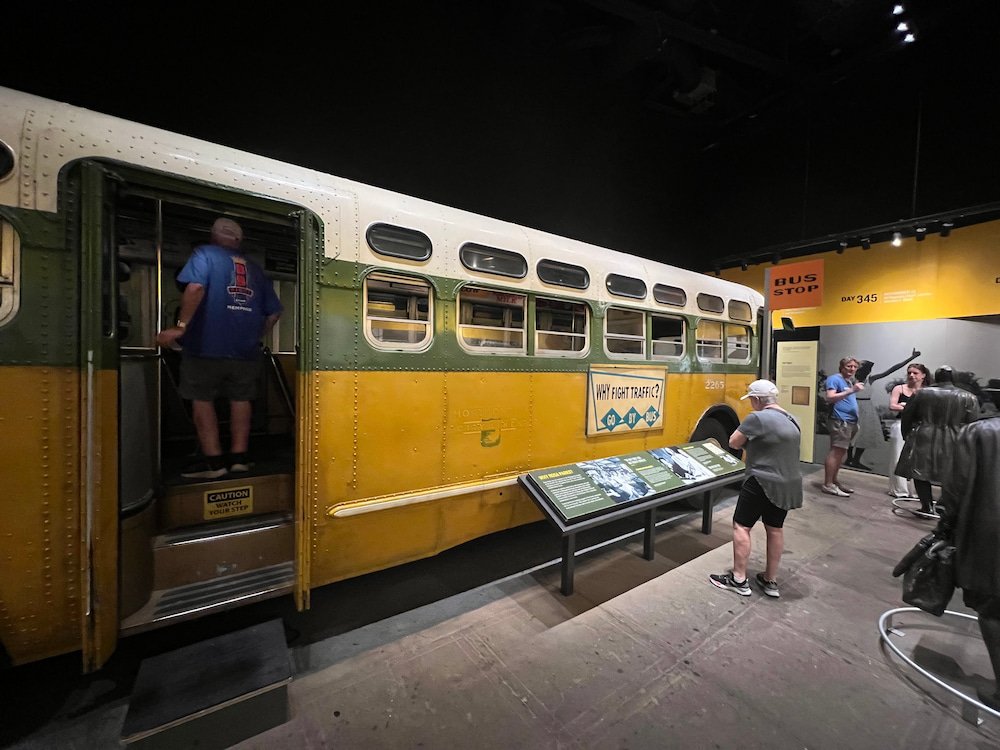



There were so many other exhibits that were incredibly poignant and powerful in highlighting the racial discrimination, violence, and struggles over hundreds of years. These included details of student protesters and leaders such as Bayard Rustin, the Montgomery Busy Boycott, the Freedom Rides, and the Memphis Sanitation Strike. We'd heard of the latter, but learned that this was what led to Dr. King traveling to Memphis to march with the workers, leading to his tragic murder. In one exhibit, there was also a video of Dr. King giving his famous "I Have A Dream" speech, and a bunch of us all gathered around to watch it. Even though we've seen and heard this speech many times before, it still gave us chills.
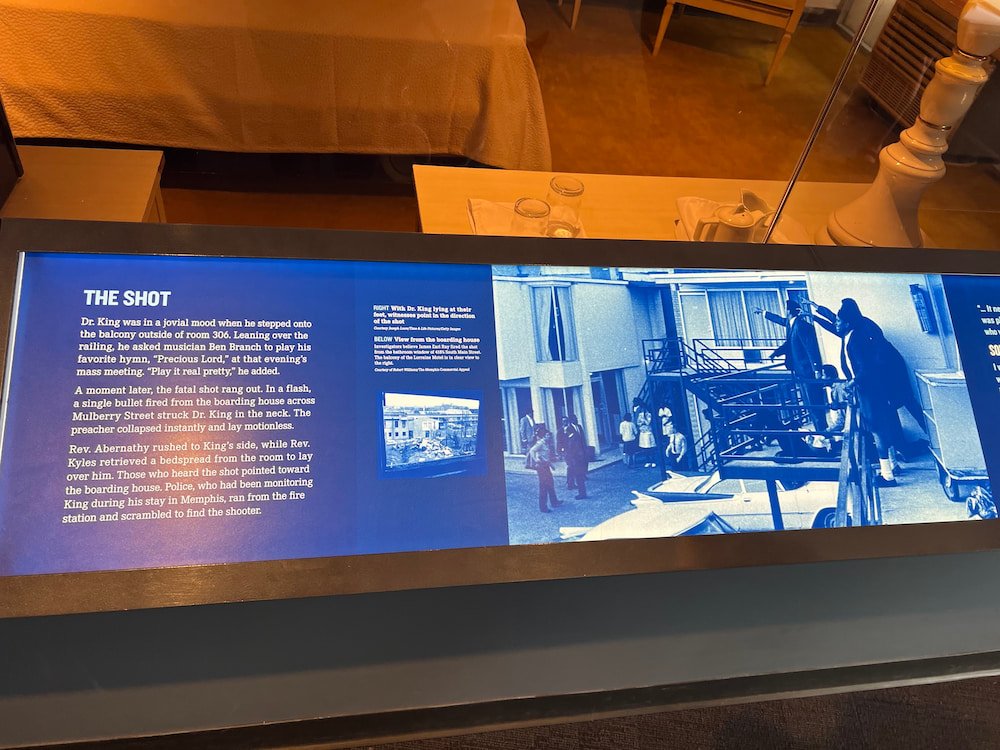

One of the final sections of the museum is seeing Room 306 in the Lorraine Motel, where Dr. King stayed before he was killed. This, and the room next to it where his colleagues were staying, are still preserved from that night.
Reentering Small Town Arkansas
After the Civil Rights Museum, we crossed the bridge back into Arkansas, where the landscape quickly became very rural. One of the towns we drove through was Wilson, which had a lot of cotton fields, which we noticed for the first time on this trip! There was also a big sign for gin, but it's not the alcohol--rather, a cotton gin is a machine that separates cotton fibers from their seeds.



Also in the town of Wilson is the Hampson Archaeological Museum State Park, a free museum that shows exhibits and artifacts from the Nodena site, a prehistoric Native American village that thrived between A.D. 1400–1650 not far from the museum. It's a small but fascinating collection showing how the people lived, as well as the unique red and white swirled pottery used hundreds of years ago. Ahead of entering the museum, there were a collection of pelts--including raccoon, skunk and other animals, and Michael guessed them all correctly! Most interestingly, the beaver skin was less coarser than what we expected--the pelt was very smooth and silky.
We continued driving along, passing through Osceola, which is known for its role in the development of Blues music, and there's an annual music festival in the town. We also passed through a very abandoned part of town, which showed sign of what would have been thriving businesses back in its heyday.
Reentering Missouri
We've passed through 3 states in 1 day before (such as when we went through Washington, Idaho and Montana), and we achieved this again today by crossing the state border into Missouri! It was still a rural setting, as evidenced by the billboard on the highway advertising Grizzly Jig ("The Biggest Crappie Store in America!" It's a sporting goods store, that sells things like fishing gear), as well as passing by the town of Portageville (Home to the National Soybean Festival!).
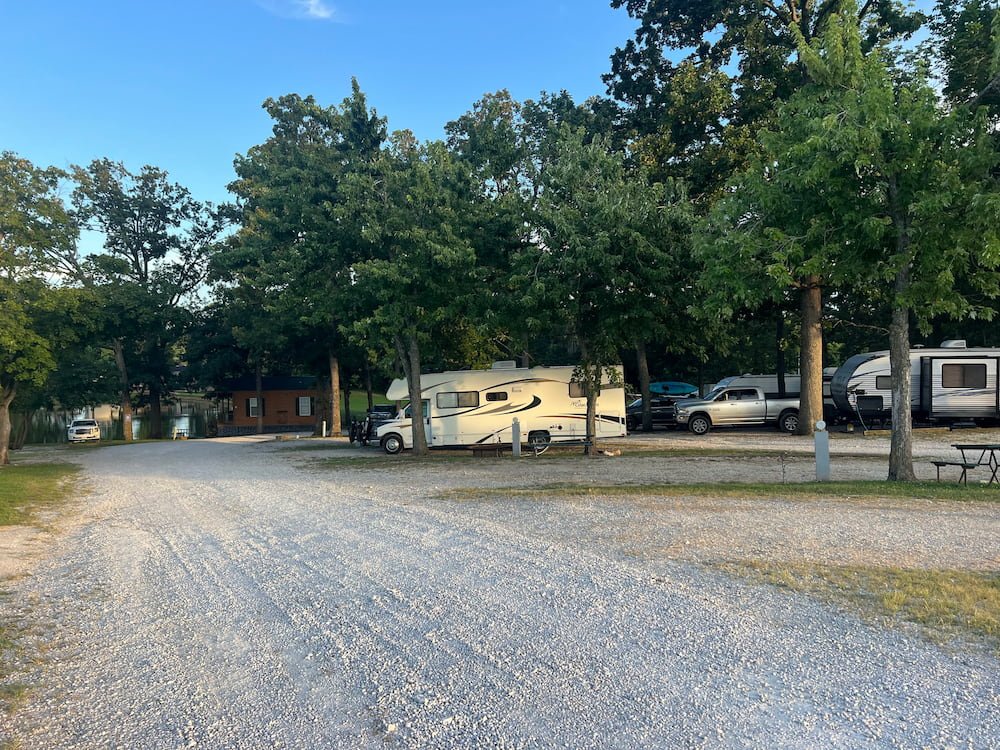
Before sunset, we arrived at Perryville RV Resort, a nice campground with cabins, a playground, hiking trails, and of course--a pool! The pool closed at sunset, so we rushed over there to enjoy the last hour of it being open, and were impressed that it was a rather deep 9 feet at one end! Lisette dove to the bottom but misjudged the depth, so she banged her head (whoops!) on the cement, making loud "thud" sound that Michael could hear from the surface. Fortunately, the sound was worse than the actual impact, with hardly a bump visible. A good reminder to keep your hands out in front when diving to avoid such an incident in future!
Route Map
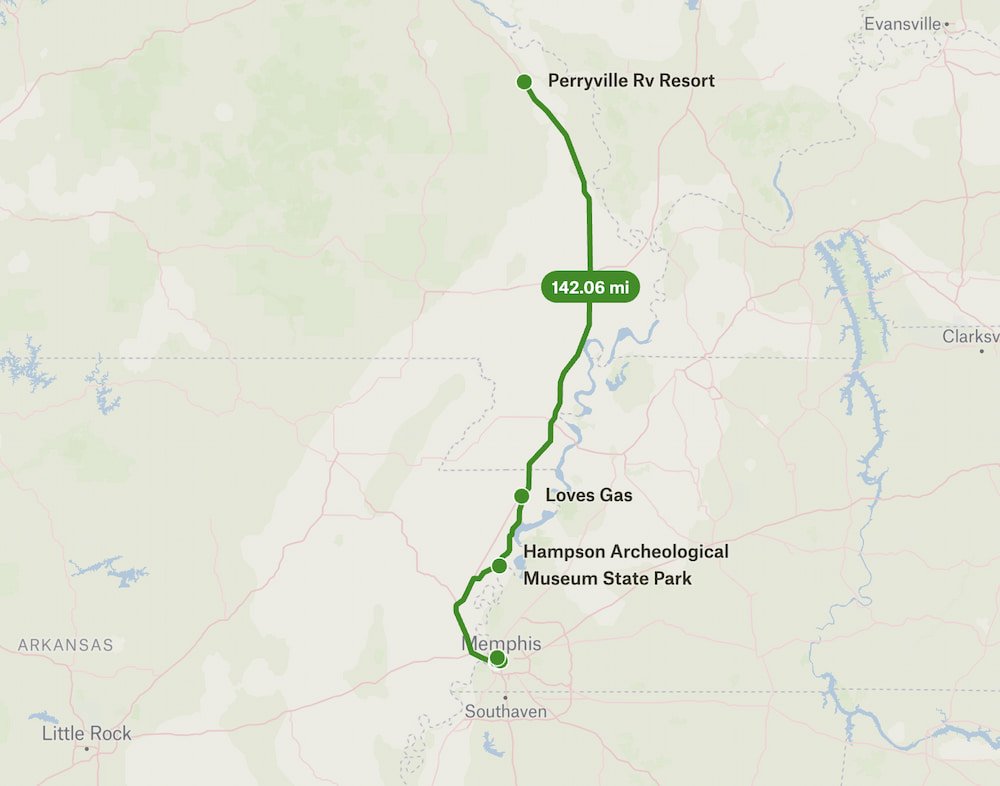

[…] places related to Dr. Martin Luther King Jr., including where he was tragically assassinated at the Lorraine Museum in Memphis. We now saw his birth home in the historic Auburn Avenue district, once known as the "Black […]